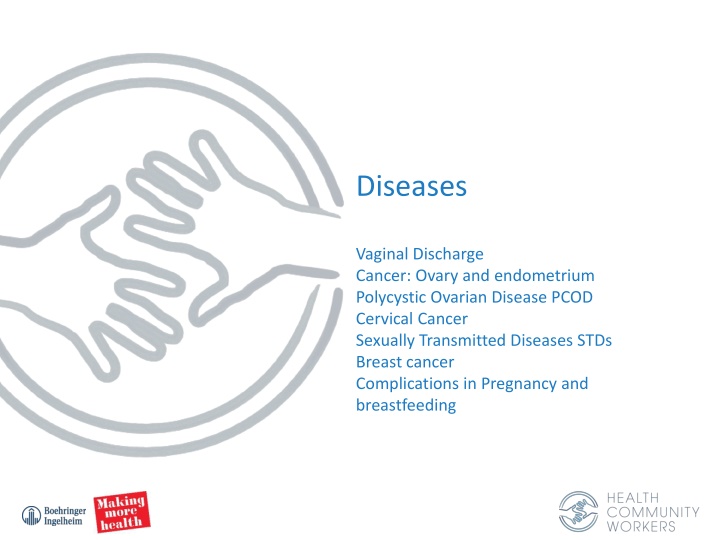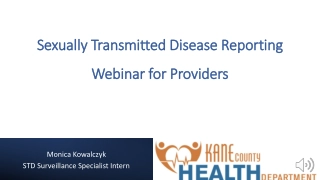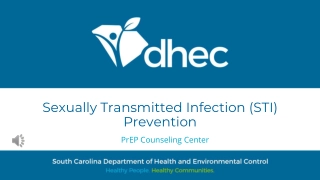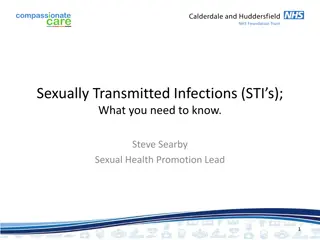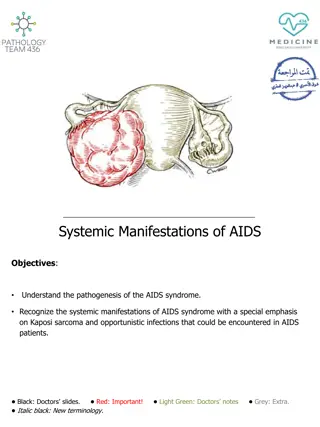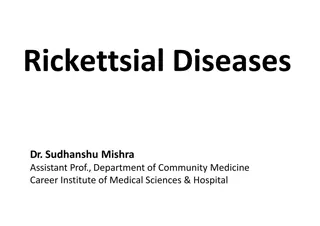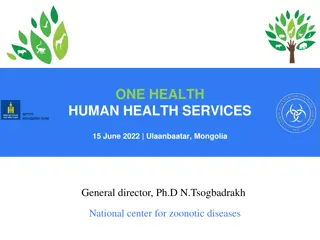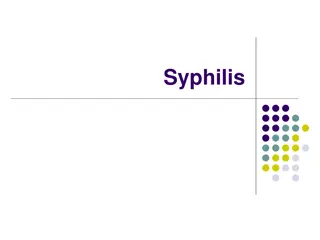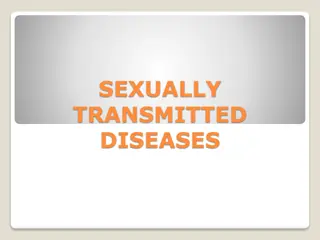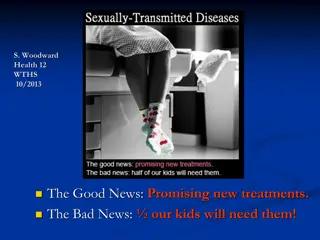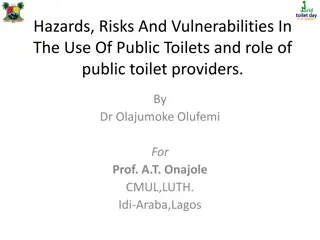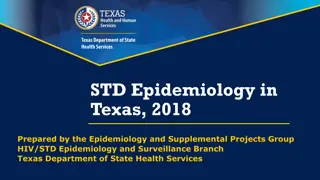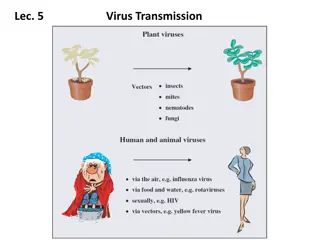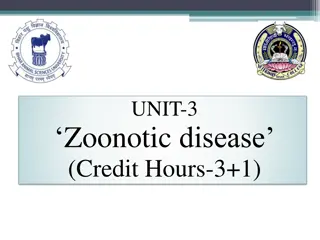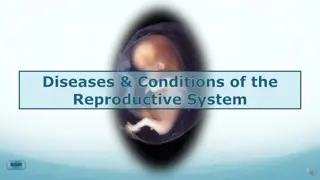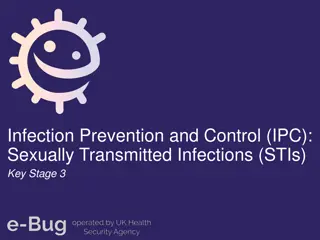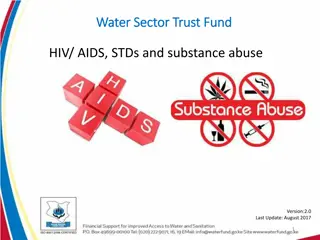Sexually Transmitted Diseases
Sexually Transmitted Diseases (STDs) are infections caused by bacteria, parasites, and viruses that are passed through sexual activity. There are more than 30 types of STDs, including genital herpes, HIV/AIDS, HPV, gonorrhea, syphilis, and more. Symptoms may include vaginal discharge, fever, pain during sex, and feeling unwell. Prevention methods include sexual abstinence, monogamy, vaccinations, and safe sex practices.
Download Presentation

Please find below an Image/Link to download the presentation.
The content on the website is provided AS IS for your information and personal use only. It may not be sold, licensed, or shared on other websites without obtaining consent from the author.If you encounter any issues during the download, it is possible that the publisher has removed the file from their server.
You are allowed to download the files provided on this website for personal or commercial use, subject to the condition that they are used lawfully. All files are the property of their respective owners.
The content on the website is provided AS IS for your information and personal use only. It may not be sold, licensed, or shared on other websites without obtaining consent from the author.
E N D
Presentation Transcript
Diseases Vaginal Discharge Cancer: Ovary and endometrium Polycystic Ovarian Disease PCOD Cervical Cancer Sexually Transmitted Diseases STDs Breast cancer Complications in Pregnancy and breastfeeding
Sexually Transmitted Diseases STDs
What are they? They are infections caused by bacteria, parasites and viruses They are passed from one person to another through sexual activity
Different Types STDs are more easily transmitted when they are not using condoms There are more than 30 STDs
Different Types Genital herpes Acquired Immune Deficiency Syndrome AIDS ( HIV) Human Papiloma Virus (HPV): cervical cancer Gonorrhoea Syphilis Hepatitis B Chlamydia, chancroid Pubic lice Trichomoniasis
Symptoms Vaginal discharge Vaginal odour Fever Pain or discomfort during sexual intercourse Pain when urinating Generally feeling unwell Urticaria / Hives Thrush in the mouth
AIDS/HIV Human Immunodeficiency Virus (HIV) attacks the immune system, land makes a person more vulnerable to infections and diseases. Can be found in semen, blood, breast milk, and vaginal and rectal fluids. Can be transmitted through blood-to-blood contact, sexual contact, breast-feeding, childbirth, the sharing of needles and syringes.
Prevention Sexual Abstinence Monogamy to one uninfected partner Vaccinations Check for infections Drink alcohol in moderation Explain you want safe sex Education Take a responsible approach to getting intimate with another person, and it could protect you from a range of health problems further down the line.
Breast cancer: What is it? Breast cancer is a disease in which malignant (cancer) cells form in the tissues of the breast. Breast cancer is the most commonly diagnosed cancer in women.
Breast cancer: What causes it? Cancer grows when a cell s DNA is damaged. It could be genetic or environmental, or, in most cases, a combination of the two.
Breast cancer: What is a metastasis? We need to detect early Metastasis: when cancer cells of a malignant tumor spread to other parts of the body, usually through the lymph system, and form a secondary tumor.
Breast cancer: prevention 1. Keep Weight in Check 2. Be Physically Active 3. Eat Fruit & Vegetables and Avoid Too Much Alcohol 4. Don t Smoke 5. Avoid Birth Control Pills, Particularly After Age 35 6. Avoid Menopausal Hormone Therapy 7. Don t Forget Screening
Complications in Pregnancy and Breasfeeding
Pregnancy: Complications Diabetes High blood pressure Problems with placenta (not work as well) Vaginal bleeding Early labour Baby is not growing well Baby with medical problems: malformations
Pregnancy: Complications Ectopic Pregnancy: the embryo develops outside the uterus. Abdominal pain and vaginal bleeding.
Postpartum problems experiences extreme abdominal cramping has problems urinating her stitches become extremely tender her vaginal discharge suddenly becomes bright red and extremely heavy), develops an unpleasant odour or contains clots develops a fever or flu-like symptoms feels dizzy or faint develops a hot, inflamed or red area on her leg that is tender to the touch (sign of a possible blood clot) feels emotional :post partum depression pain, fever or persistent
Breastfeeding problems Plugged Ducts and Mastitis Apply a warm compress. Massage the hardened area, moving your fingers from the chest toward the nipple .
